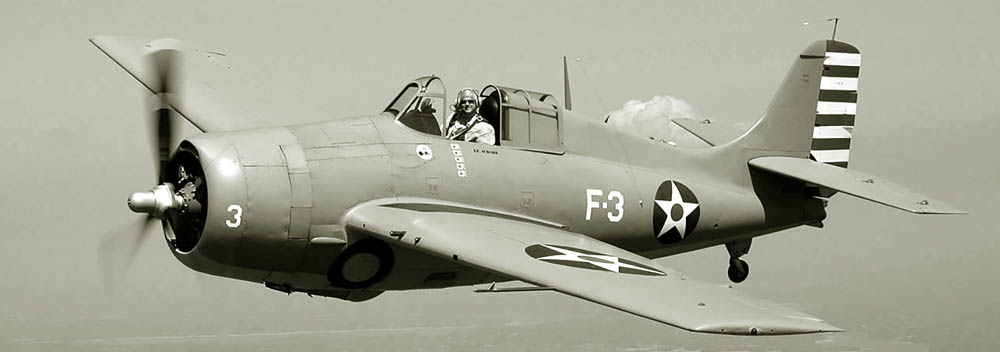
Aviation of World War II


 |
Aviation of World War II |


|
|
Soviet Union | Lend - Lease | Facts | Forum | Germany | Japan | R A F | U S A A F | Other | Photos |
|
|
F4F-4 "Wildcat"Shipborne FighterGrumman
A new version, the F4F-4, entered service in 1942 with six guns and folding wings, allowing more to be crammed on a carrier; this was the definitive version and the one that saw the most combat service in the early war years, including the Battle of Midway. This version was less popular with American pilots, because the same amount of ammunition was spread over two additional guns, decreasing firing time. With the F4F-3's four 50-caliber guns and 450 rounds per gun, pilots had 34 seconds of firing time; six guns decreased ammunition to 240 rounds per gun, which could be expended in less than 20 seconds. The increase to six guns was attributed to the Royal Navy, who wanted greater firepower to deal with German and Italian foes. Jimmy Thach is quoted as saying, "A pilot who cannot hit with four guns will miss with eight." Extra guns and folding wings meant extra weight, and reduced performance: the F4F-4 was capable of only about 318 mph at 19,400 ft. Rate of climb was noticeably worse in the F4F-4, while Grumman optimistically claimed the F4F-4 could climb at a modest 1,950 feet per minute, in combat conditions, pilots found their F4F-4s capable of ascending at only 500 to 1,000 feet per minute. Moreover, the F4F-4's folding wing was intended to allow five F4F-4s to be stowed in the space required by two F4F-3s. In practice, the folding wings allowed an increase of about 50% in the number of Wildcats carried aboard US fleet aircraft carriers. A variant of the F4F-4, designated F4F-4B for contractual purposes, was supplied to the British with a modified cowling and Wright Cyclone engine. These aircraft received the designation of Martlet IV. |
|
|